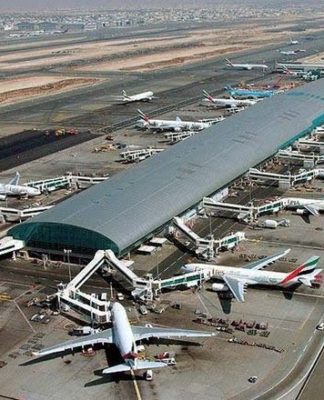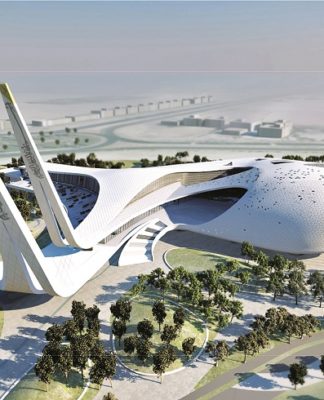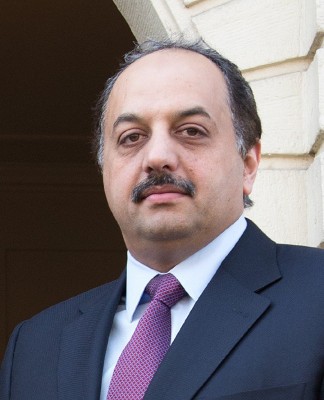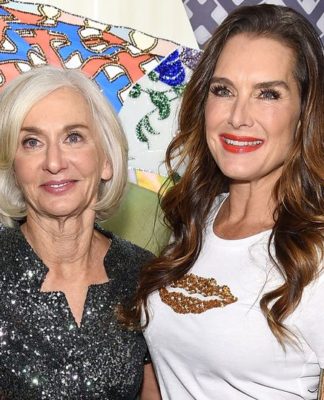Museums in Japan adjust to life after COVID-19
The country’s cultural spaces are looking to rethink their role in society as they face an uncertain future due to increased competition and an aging population
Items from the Hoyukan collection are on display at the Morioka History and Culture Museum in Iwate Prefecture through Feb. 20. | COURTESY OF THE MORIOKA HISTORY AND CULTURE MUSEUM
Items from the Hoyukan collection are on display at the Morioka History and Culture Museum in Iwate Prefecture through Feb. 20. | COURTESY OF THE MORIOKA HISTORY AND CULTURE MUSEUM
BY ERIC MARGOLIS
CONTRIBUTING WRITER
Feb 13, 2023
SHARE
NAGOYA – Foreign and domestic tourists are venturing out again only to find that Japan’s cultural landscape has changed significantly since COVID-19 first led to restrictions on public gatherings in 2020.
Travelers will first notice some of the major closures that have occurred since then. TeamLab Borderless Odaiba has shut its doors for good, while the Edo-Tokyo Museum has been closed for renovations until 2025.
Japan’s remaining 6,000 or so museums face a unique challenge as they look to find ways of remaining relevant in the face of changing audience preferences.
It’s not an issue that is altogether new to many cultural spaces.
According to the Cultural Affairs Agency, the number of museums in Japan has remained relatively stagnant since 2005. In contrast, the number of annual overseas visitors to Japan has grown from around 7 million in 2005 to more than 31 million by 2019.
However, the country’s museums have been finding it increasingly difficult to attract regular visitors due to increased competition for recreational time from other venues as well as an aging population.
In many ways, the emergence of COVID-19 three years ago has forced many museums to rethink operations in an effort to retain a regular customer base. On a superficial level, they’ve reviewed the content they are displaying and have embraced new technology in response to restrictions brought on by COVID-19.
But museum operators believe it’s becoming increasingly important to reposition themselves in a crowded market so that their exhibits become a key part of the country’s underlying infrastructure as it experiences ongoing seismic cultural shifts.
What’s more, they see a role for museums in preserving a community’s cultural heritage and local livelihood in the face of uncertainty.
The interior of the Morioka History and Culture Museum in Iwate Prefecture | COURTESY OF THE MORIOKA HISTORY AND CULTURE MUSEUM
The interior of the Morioka History and Culture Museum in Iwate Prefecture | COURTESY OF THE MORIOKA HISTORY AND CULTURE MUSEUM
Beyond preservation
The history of museums in Japan can be traced back to ancient times when the majority of valuable cultural artifacts were preserved in temples and shrines.
“It’s almost impossible to compare what is sitting in museums to the volume of priceless objects preserved in Kyoto’s temples,” says Jun Tomita, vice director of the Tokyo National Museum. “Even today, museums conduct many exhibitions in concert with temples.”
The modern Japanese museum arrived with the opening of the Tokyo National Museum in 1872. A group of civil servants, including Hisanari Machida, who later became first director of the Tokyo National Museum, was sent to Europe in the early Meiji Era (1868-1912) to see firsthand how the continent preserved its cultural relics.
After Japan was invited to participate in the 1873 Vienna World Fair, the civil servants used their knowledge to assemble an exhibition of national cultural properties in 1872, which would subsequently be displayed at the world expo. This collection ultimately formed the basis of the Tokyo National Museum’s initial collection.
In addition, the government passed several national laws relating to museums in 1872. The implementation of this legislation led to the creation of similar cultural institutions in Kyoto (1875) and Nara (1877). However, it wasn’t until after World War II that the number of museums in Japan skyrocketed. There were an estimated 335 museums nationwide before the outbreak of the Pacific War, but more than 5,800 are in operation today, with much of the growth taking place in the 1960s, ’70s and ’80s.
“From the 1960s, people started to see that it was important to focus not just on economic but also cultural matters,” says Masayuki Handa, executive director of the Japanese Association of Museums.
The growth in the number of new museums came to a shuddering halt when Japan’s economic bubble burst in the 1990s, forcing museums to begin to play a more holistic role in society.
“Museums in Japan have first and foremost existed to educate society and pass on knowledge to the next generation,” Handa says. “But over the past 20 to 30 years, the purpose has broadened considerably. Museums are starting to exist for lifelong learning and practical well-being.”
Faced with rapidly shifting currents of tourism and economic instability, museums ranging from the Tokyo National Museum to the 21st Century Museum of Contemporary Art, Kanazawa have expressed the need for paradigm shifts moving forward.
An installation view of
An installation view of “The Timeless Imagination of Yves Klein: Uncertainty and the Immateriality,” which is on display at 21st Century Museum of Contemporary Art, Kanazawa through March 5. | KEIZO KIOKU
New opportunities
The growth of inbound tourism and the COVID-19 pandemic have affected museums in Japan in a variety of ways over the past decade, forcing cultural institutions to make considerable changes to their operational approach and overall vision.
Across the board, museums have rapidly expanded language offerings for their websites, signage and brochures, even in smaller regional facilities such as the Morioka History and Culture Museum in Iwate Prefecture. Translations in English are most frequently provided, followed by translations in Mandarin and Korean. Translations in Thai, Vietnamese, Spanish and French have also become common language options at large facilities.
Besides multilingual offerings, “we’ve also made changes to our facilities based on the preferences of inbound tourists,” says Kazuhiko Ohora, director of the Toyota Commemorative Museum of Industry and Technology in Nagoya. “For example, we offer cashless payment for everything and have installed free WiFi.”
Some museums have been taking foreign visitors’ interests and preferences explicitly into account with their programming, like when the Tokyo National Museum held an exhibition on Chinese calligraphy in 2019.
The arrival of COVID-19 at the beginning of 2020, however, changed everything, gutting attendance and revenue.
Visitor numbers to the Hiroshima Peace Memorial Museum fell from around 1.75 million in 2019 to 320,000 in 2020. Visitor numbers to the Tokyo National Museum dropped from 2.6 million in 2019 to just 370,000 a year later.
Items sit on display in an exhibition at the Hiroshima Peace Memorial Museum in February 2022. | COURTESY OF THE HIROSHIMA PEACE MEMORIAL MUSEUM
Items sit on display in an exhibition at the Hiroshima Peace Memorial Museum in February 2022. | COURTESY OF THE HIROSHIMA PEACE MEMORIAL MUSEUM
The largest museums saw the steepest losses. According to Handa, museum attendance across the board in 2020 was about 50% of what it was pre-pandemic on average.
Initially, museums scrambled to introduce virtual tours for audiences that were largely avoiding large crowds.
“Museums have really focused on digitization and virtual galleries over the past three years,” Handa says. “Digitization and VR technology is developing well in Japan, so museums will look to continue working with a hybrid in-person and online format for lectures and events moving forward.
“However, many small regional museums simply don’t have the resources to keep up with digitization, and the quality of digital programming remains relatively low. We won’t see digitization fully work until there’s some sort of accessible platform that all museums can use to digitize and share their collections.”
For museums located in Japan’s rural regions, COVID-19 exacerbated falling visitor numbers that were already being driven down by aging local populations.
Depopulation has affected museums’ capabilities and activities. For example, the Morioka History and Culture Museum lacks the human resources to adequately preserve the city’s vast collection of valuable historical documents from the Edo Period (1603-1868).
“We’re losing important artifacts before families even have a chance to consult with us,” says Haruko Konishi, the museum’s public relations manager. “We try to work with other museums, but they can’t always assist because they also don’t have enough manpower.”
Other institutions, like the Hiroshima Peace Memorial Museum, are facing a race against time. A dwindling number of survivors from the atomic bombing of the city nearly 80 years ago is now spurring the museum to gather as much historical evidence as possible before it’s only left with sources born after the attack. As a consequence, the museum is currently pouring the bulk of its efforts into gathering materials, recordings, interviews and resources to ensure that it will be possible to document this event for future generations.
“My generation’s parents experienced the war directly, so we had the opportunity to listen to their experiences,” says Takuo Takigawa, director of the Hiroshima Peace Memorial Museum. “But my children aren’t capable of communicating this history to their own kids. Interacting with survivors is the best possible way to learn.”
The rising cost of energy has put additional pressure on museums’ bottom lines in what Handa describes as a “very difficult economic situation.”
With rising concerns about the climate crisis, museums in Japan are trying to operate in a sustainable fashion. But a sustainable approach poses practical challenges when working with international collaborations.
21st Century Museum of Contemporary Art, Kanazawa | KOJI ISHIKAWA / COURTESY OF 21ST CENTURY MUSEUM OF CONTEMPORARY ART, KANAZAWA
21st Century Museum of Contemporary Art, Kanazawa | KOJI ISHIKAWA / COURTESY OF 21ST CENTURY MUSEUM OF CONTEMPORARY ART, KANAZAWA
Yuko Hasegawa, director of the 21st Century Museum of Contemporary Art, Kanazawa, says the museum had decided to send materials for an exhibition on Danish artist Olafur Eliasson by sea instead of air, a significant change in past approaches.
Museums are also struggling to find enough staff to run operations on a daily basis, mirroring the dire situation faced by businesses involved in hospitality and tourism.
“No one could have anticipated COVID-19,” Hasegawa says, “and these dramatic changes aren’t going to end.”
A digitalized future?
For the first time in a decade, a revision to Japan’s museum laws will go into effect this March.
“International reports are showing that close to a third of the world’s museums won’t be able to survive,” Handa says. “Looking ahead, museums need to prove that they are fundamental not just for education but to each locality’s town planning, economic development, and lifestyle and well-being.”
The 21st Century Museum of Contemporary Art, Kanazawa in particular, has ambitious goals. A bullet train line that opened in 2015 has brought in a large number of Japanese and foreign tourists to the city, allowing the museum to expand its role so that it can sit at the center of the city’s cultural and tourism scene.
“We plan on holding ecology-themed exhibitions in 2024, and we’d like to collaborate with other institutions in Kanazawa, including the nearby gardens,” Hasegawa says. “We also want to collaborate with the tourism bureau, travel agencies, local government and other institutions to act as a single network and become a cultural resource for locals and tourists.”
The museum has been a prominent supporter of Kanazawa’s wider art scene, with Hasegawa saying that the number of small art galleries in the city has grown from 33 to more than 50 since the museum opened in 2004.
In addition to holding remote events and lectures online, the museum has become a center point for lovers of culture.
“Workshops, lectures, concerts as well as the museum shop, restaurant and library come together, making us a public utility for people who come to experience culture,” Hasegawa says.
The interior of the Toyota Commemorative Museum of Industry and Technology in Nagoya | COURTESY OF TOYOTA COMMEMORATIVE MUSEUM OF INDUSTRY AND TECHNOLOGY
The interior of the Toyota Commemorative Museum of Industry and Technology in Nagoya | COURTESY OF TOYOTA COMMEMORATIVE MUSEUM OF INDUSTRY AND TECHNOLOGY
For the Toyota Commemorative Museum of Industry and Technology, this public utility role comes in the form of focusing on entrepreneurship.
“Toyota started as a business from nothing, so we see ourselves as a place that encourages young people to become interested in startups,” Ohora says. “The function of Japanese museums as advancing research and preservation is very developed, but in terms of their function as centers of tourism, culture and community, there is still a long way to go.”
Outside of the pandemic, depopulation and aging pose a threat to Japan’s museums beyond the urban hubs of Tokyo, Osaka, Kyoto, Nagoya, Hiroshima and Fukuoka.
“We are starting to see tourists come all the way to Tohoku, so we’re considering how to appeal more to foreign tourists,” says Konishi of the Morioka History and Culture Museum. “We have incredible materials, well-preserved, but we need to come up with new ways to differentiate ourselves from Kyoto, for example.”
At the very least, the museum wants to be a focal point for tourism in Morioka, offering visitors recommendations and walking tours alongside multilingual assistance.
Handa says that collection digitization provides benefits especially for regional museums, as the tool acts as effective marketing, potentially convincing visitors to come and see exhibits for themselves.
“The most important thing, however, is that museums can’t operate as museums alone,” he says. “They have to link themselves to the community as a whole — to the tourism industry, town planning, medical institutions and welfare programs. Small towns will thrive with museums when they think about the whole community and its structure.”
A production line sits on display at the Toyota Commemorative Museum of Industry and Technology in Nagoya. | COURTESY OF TOYOTA COMMEMORATIVE MUSEUM OF INDUSTRY AND TECHNOLOGY
A production line sits on display at the Toyota Commemorative Museum of Industry and Technology in Nagoya. | COURTESY OF TOYOTA COMMEMORATIVE MUSEUM OF INDUSTRY AND TECHNOLOGY
In recent years, the Tokyo National Museum has also dramatically expanded its range of digital services and programming. The museum has started to offer escape games, outdoor movie screenings, cherry-blossom viewings and new cafes.
In an attempt to piggyback on Japan’s tourism wave, like the Morioka History and Culture Museum, the Tokyo National Museum wants to be a focal point for tourism — all over Japan.
“We want to be the home base for foreign tourists in Japan,” Tomita says. “People can come here first to develop an understanding of what they’ll experience for themselves in the rest of the country.”
Expanding outside of Japan is another possible route. The Hiroshima Peace Memorial Museum held exhibitions abroad in the United States in 2019 and Poland in 2022, and wants to continue to do so moving forward, especially in an era of intensifying global conflict.
In spite of struggles with COVID-19 and difficult economic times, the potential for museums in Japan remains bright. If the best plans come to fruition, Japan’s museums will become centerpieces of local communities over the next decade.
“It’s about symbiosis, interdependency,” Hasegawa says. “We need to create an ecosystem of inspiration — then we’ll really see the birth of something new.”


















![How to get a Qatar Family Residence Visa? [ Updated ]2022](https://welcomeqatar.com/wp-content/uploads/2022/04/maxresdefault-2-324x400.jpg)











